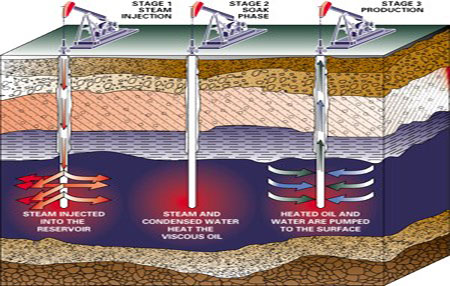Previous experiences have shown that thermal recovery of heavy oil has obvious limitations especially in deep formation where the process suffers severe heat loss to the overburden and underburden layers. Steamflooding, which is also a form of thermal recovery, requires significant fresh water and natural gas source, giving rise to increase in the operating costs and emissions of greenhouse gas.
The efficiency of cyclic steam stimulation (also a form of thermal recovery) is dependent on a number of critical parameters including: (1) the amount of steam injected (2) the net sand thickness of the producing interval (3) the surface injection pressure (4) the rate at which energy is removed from the formation through field productions (5) the number of preceding cycles (6) the steam properties, and (7) the state of the primary depletion mechanism.
With all these cons surrounding thermal recovery, what is the way forward?? Remember that the International Energy Agency (IEA) has estimated that heavy oil accounts for over 50% of the global recoverable oil resources.
We (CleanScript) have developed and are still developing novel techniques for optimal heavy and extra heavy oil recovery.


